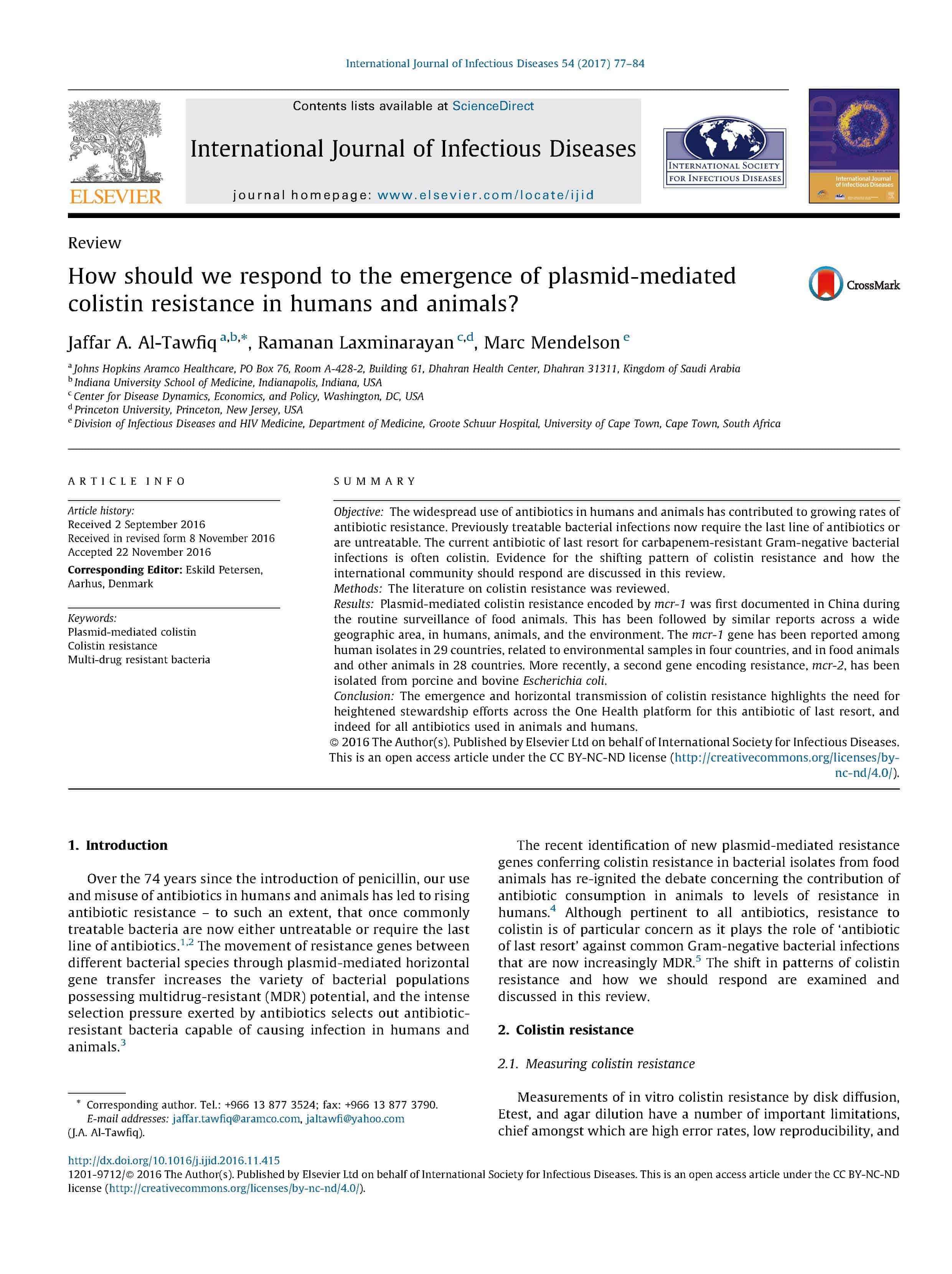January 25, 2017

The Question: Colistin resistance develops as antibiotics are overused in human medicine as well as agriculture. Subtherapeutic doses of antibiotics have been used for decades to promote animal growth and prevent disease, rather than simply to treat disease. It is estimated that approximately 12,000 tons of colistin is used in food production annually, across the globe, and expected to rise to 16,500 tons by 2021.
Bacterial resistance to colistin can develop vertically when the resistance-conferring mcr-1 gene is passed from one generation to the next, or horizontally when plasmids containing mcr-1 are transferred between species. Plasmid-mediated colistin transfer allows particularly rapid spread of resistance.
What we found: The authors propose a comprehensive approach to slowing the spread of resistance, which starts with preventing infections from occurring in the first place by paying attention to social determinants of infection, such as access to clean water and sanitation, access to immunization against bacterial and viral illnesses that drive the use of antibiotics, and implementation of effective infection prevention and control practices.
To address misuse of colistin in the agricultural sector, the authors suggest an immediate cessation of its use in livestock, a goal put forth by the Responsible Use of Medicines in Agriculture (RUMA) Alliance and the Government of China.
The authors conclude that any proposed global stewardship framework must ensure equity of access, define working parameters for how colistin should be used, must be enforceable, and countries must be held accountable for misuse. The United Nations-led coordinating mechanism put forth by the United Nations political declaration on Antimicrobial Resistance provides an opportunity to establish monitoring and evaluation mechanisms to conserve colistin and other important antibiotics.
Why it matters: According to Professor Ramanan Laxminarayan, “Colistin is of particular concern because it is an antibiotic in our last line of defense against bacterial infections. If bacteria develop resistance to antibiotics of last resort, doctors have no remaining defense.”

